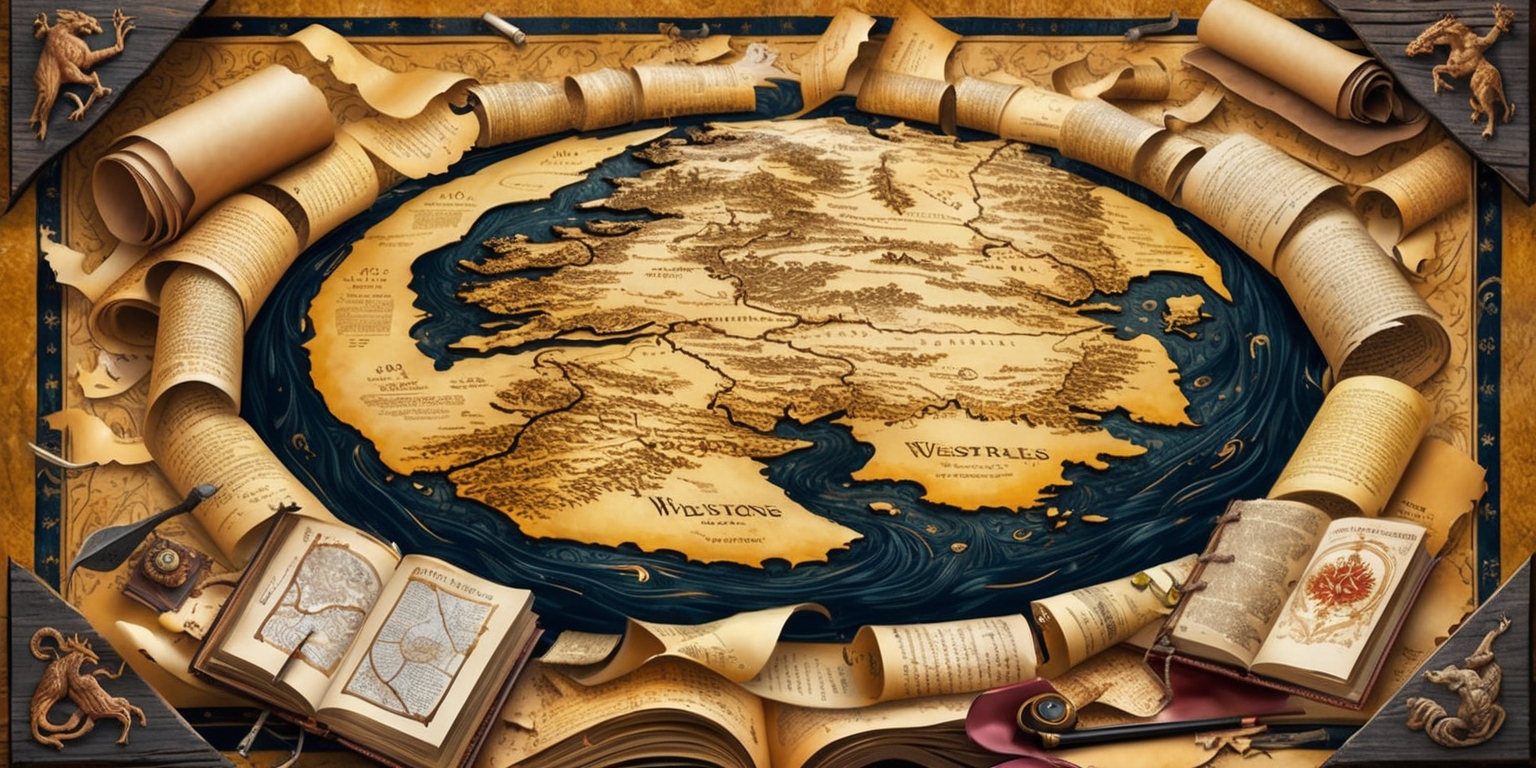The Resurgence of Westeros: From Embryonic Ideas to Epic Tales
- 06 Jan 2025

The realm of Westeros, a land steeped in intricate narratives intertwined with politics, mythical creatures, and unforgettable battles, has enchanted audiences around the globe. This magnetic allure arises from George R.R. Martin’s masterpiece, An Epic of Frost and Flame: The Game of Thrones series, particularly in its first four seasons, showcased a stunningly successful adaptation of epic fantasy into a gripping television experience. However, as the series progressed, particularly towards its conclusion, a noticeable decline in quality became all too apparent, leaving many devoted fans feeling disillusioned. Yet, a beacon of hope emerged after a few quiet years—an opportunity to delve back into the enchanting world of Westeros. Interestingly, this revival almost didn't occur, as it stemmed from an unexpected shift in Martin's creative vision.
Revisiting Westeros
The potential resurrection of the beloved universe began with George R.R. Martin's contemplations surrounding the intricacies of his notable saga. His interview with a respected publication uncovered his initial, modest intentions when embarking on the journey of writing Fire and Blood, which ultimately became the foundation for the series that precedes it, House of the Dragon.
From Minor Expansion to Epic Narrative
Initially, Martin envisioned Fire and Blood as a additional component to The Realm of Ice and Fire. Rather than an extensive exploration of Targaryen lore, it was intended to be a mere polishing and expansion of existing narratives, embellishing the history of the Targaryen monarchy.
The Targaryen Chronicle
While admitting to the dramatic shift in perspective regarding his project, Martin recognized that he had transformed his initial vision into a comprehensive history of the Targaryen kings. This unanticipated evolution underscored the depth of storytelling that was waiting to be unearthed.
The Unreliable Narrator

The narrative of Fire and Blood is delivered through the voice of Archmaester Glydan. Glydan's account, layered with subjectivity and potential unreliability, invites readers into a vivid yet complex tapestry of events that culminated in the Targaryen civil war. The allure of historical accounts fosters a space for both connection and skepticism.
Historical Inspirations
In articulating his design for the work, Martin drew inspiration from Thomas B. Costain's four-volume history of the Plantagenets written in the 1950s. Martin admired Costain’s classic approach, characterized by dramatic accounts of wars, betrayals, and schemes rather than socio-economic or cultural analyses.
The Art of Conflict
The thematic heart of Fire and Blood resonates with the conflicts and colorful—albeit violent—stories endemic to Targaryen history. Martin’s storytelling captures the essence of intrigue, presenting a world rife with peril, ambition, and rivalry.
Challenges in Creative Expression
Shifting his focus to the Targaryen saga brought unanticipated challenges for Martin. Alongside this creative endeavor, there lingered the growing anticipation from fans eagerly awaiting The Winds of Winter, the next installment in the main series.
The Weight of Expectation
The Winds of Winter, unlike a conventional novel, comprises a multitude of interconnected narratives, each featuring unique protagonists, supporting players, and intricate relationships—woven together in a manifold fashion that adds to the complexity of Martin's task.
Resurrecting the Franchise
Though the horizon appeared bleak at times, Fire and Blood reinvigorated the franchise and provided fertile ground for the development of House of the Dragon. This prequel series, rich with dragons, familial tension, and political drama, breathed new life into the world that fans had yearned to revisit.
A Tale of Redemption
From an original plan for an understated historical account, Martin’s work evolved into a compelling narrative that significantly enriched the lore of Westeros. The transformation of Fire and Blood is a testament to Martin's creativity, skill, and dedication to weaving an intricate narrative that resonates with both old and new audiences.
Streaming Success
As the epic tale of Game of Thrones unfolds further into its narrative hold a prominent place in modern culture, the advent of House of the Dragon marks a pivotal moment in fantasy television. Both series are now available for streaming on a leading platform, offering fans a chance to relive favorite moments and uncover new stories from the ever-expanding universe.
The Community’s Resilience
The realm of Westeros is not merely a backdrop for fiction; it is a thriving community of passionate fans who discuss, analyze, and create content inspired by the series. This engaged audience thrives on the extensive lore and characters, offering a feeling of bond that transcends the digital interface.
The Cultural Impact
The impact of the Game of Thrones phenomenon and its subsequent prequel can be felt across diverse media, influencing various forms of storytelling, cosplay, and fan art. The series has become a cultural touchstone, bridging generations through shared experiences and deep-rooted engagement with the storyline.
The Future of Westeros
As fans eagerly discuss possibilities for future expansions into the rich history of Westeros, the potential for new tales, new characters, and fresh conflicts remains boundless. The elaborate history established in Fire and Blood paves the way for further exploration and adaptation, intriguing fans about what lies ahead.
A Journey of Endless Storytelling
The transformative journey of George R.R. Martin, from modest beginnings to crafting an epic narrative, exemplifies the power of storytelling itself. The allure of Westeros continues to captivate the imagination, inviting both old and new fans to lose themselves in its enchanting embrace.
Thus, we are left with the promise of a richly woven legacy, one that evokes excitement and anticipation for the myriad tales yet to unfold in Westeros, an ever-expanding universe filled with dragons, political intrigue, and profound human experiences.


